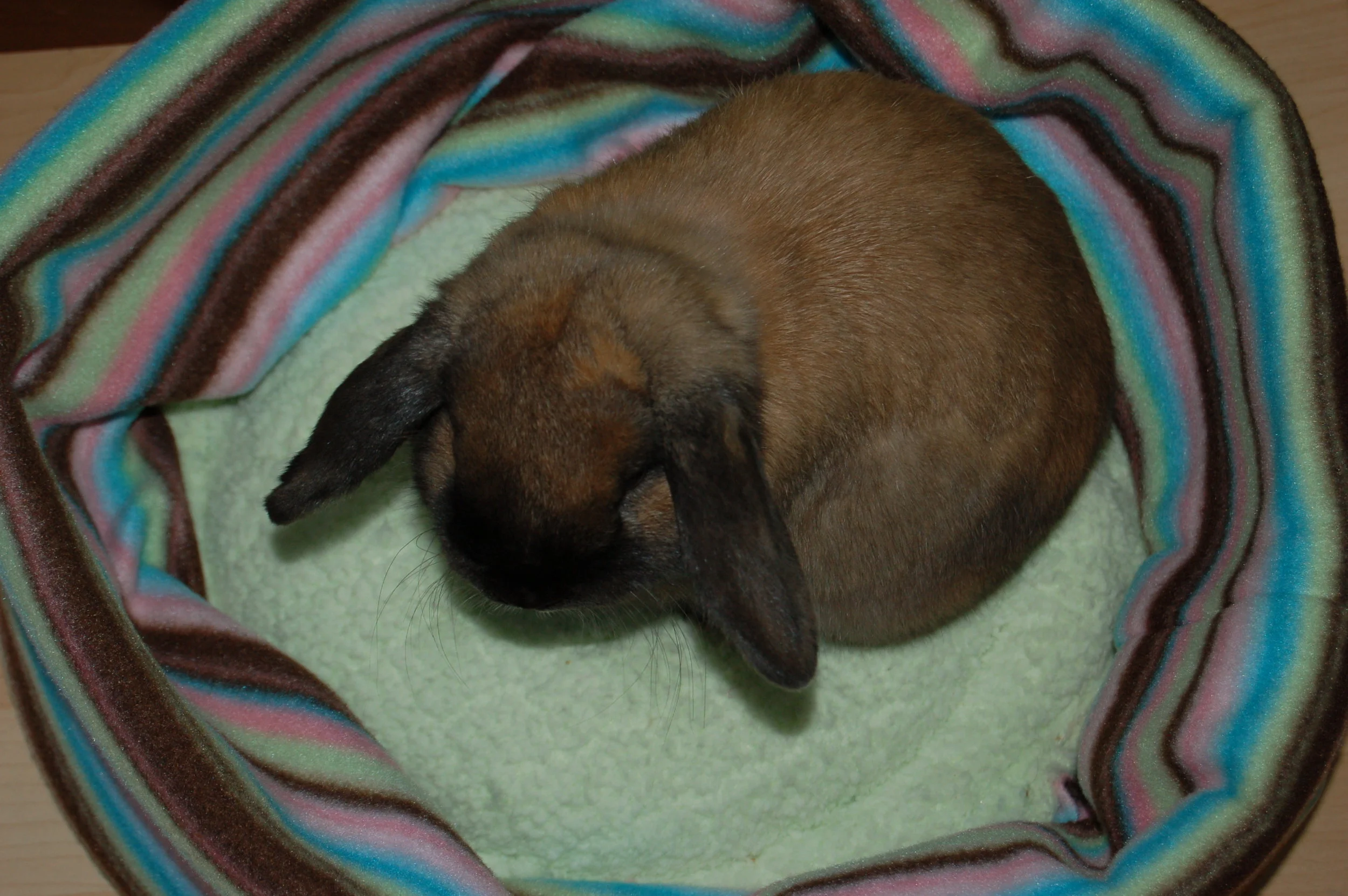Keeping a Bunny Warm
I realize that most of my readers are pet owners with their bunnies living inside their homes. That's wonderful, and it makes me happy. For those who keep their bunnies in the basement, on a four seasons porch, or in the garage, this article is for you. (The following suggestions are NOT adequate for those who keep their bunnies in hutches outside).
As the weather changes and we move through the fall season, we transition from trying to keep our bunnies cool, to trying to keep our bunnies warm. When Hickory Ridge was in Ohio, there was a brief Autumn lull when we were carefree and without air conditioner and heaters. We let the fresh air into the rabbitry in the morning and then enjoyed the warmth of the sun, shutting it in to keep things cozy at night. Sadly, that wonder was short lived. Night temps dropped, fall rain came and out came the heaters. While my bunnies were completely enclosed and free from drafts, we did need to run heaters to keep babies warm enough. There were a few other things I did to make sure that all my bunnies stayed toasty warm, even when it was -10 degrees outside.
1) Plenty of food and water. When temps drop, bunnies burn through food more quickly trying to maintain body heat. It's essential that they have access to food - whether hay or pellets or fresh greens. It's also essential that they have access to water. This seems counterintuitive, but when their metabolism burns high, they have greater hydration needs.
2) Lots of Hay. This can be really messy, but it's an effective option. Provide a box for your bunny and fill it about 3/4 with hay. Your bunny will likely hop in and eat. Eventually it will figure out that snuggling down in the hay makes for a warmer night. If you are going to go this route, look for some bedding hay or hay that is a softer cut. If it's too pokey, your bunny won't sit in it.
3) Fleece. I loved this option. I've tried a variety of applications too. I started by buying a bolt of fleece from the fabric store during black friday weekend. It was pretty cheap. When I had only a couple bunnies, I made little beds, much like what you can find at the pet store or online.
Of course the more bunnies you have, that's just not practical or clean - because it's challenging to keep a herd litter trained. I switched to covering cardboard in a layer of fleece during the fall, duct taping it in place on the bottom side. That made for two layers of insulation, and a large piece gave them plenty of space to flop out. Once winter hit, I switched to fleece pillows. The fleece was two layers, and I filled them with poly stuffing. I would walk out into the rabbitry on a cold morning, and all the bunnies would sleeping on their pillows. A quick tummy check and I was reassured that they were nice and warm.
4) A heater. I definitely used this option, but you have to be vigilant. Electric heaters require careful maintenance and positioning and propane heaters were even more so. When I used heaters, I would check on my bunnies via wireless camera in the middle of the night, just to make sure things were working correctly. I can't say that I ever found one that I loved.
5) Put carpet on the ground of the playpen. Basement, garage and porch floors can be really cold and can really drain your bunny of heat and energy. Just imagine if you had to stand on a cold floor in thin socks. Midway through fall, I went to a carpet outlet and bought a carpet remnant for very cheap. It was usually not a great color, but I wasn't really concerned about that. I took it home, unrolled it on the driveway and measured and cut squares to fit my playpens. The result? Bunnies that stayed warm and played hard.
6) Warm Water. Think about how great it is to drink hot chocolate, hot coffee, or hot tea on a winter morning. Then contrast that with how hard it would be to drink cold water. Talk about destroying your internal body temp! In the winter, I would empty bunny water bottles and refill with warm water at least once a day. At first I wondered whether they cared, but it wasn't long before they caught on to what I was doing and most would run to the water bottle and take a long drink as soon as it was hooked up.
Bunnies that exposed to gradually cooling temperatures do grow thicker undercoats for the winter. That said, pay special attention to bunnies one and under because they might not have had the chance to build up a good undercoat their first year. Watch for pregnant or nursing moms because they pull a lot of fur for nests, and burn a lot of calories producing milk. The energy they expend for their kits might leave them in the cold. Check on older bunnies as well. If a bunny is using too much energy to stay warm, his immune system strength will drop and he will become vulnerable to getting sick. If you can't keep your bunny inside your house on the main floors, try to make every effort to ensure that it stays comfortable during the cold season.


